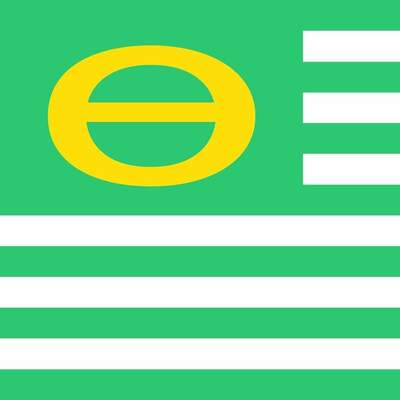- cross-posted to:
- photography@fedia.io
- photography@fedia.io
- cross-posted to:
- photography@fedia.io
- photography@fedia.io
KNBR (AM 680) Antenna, Redwood City, CA, 2024
Very tall pixels at https://www.flickr.com/photos/mattblaze/54131419266
#photography
Rodenstock 50mm/4.0 HR Digaron-W lens (@ f/6.3), Phase One IQ4-150 digital back, Cambo 1250 camera (vertically shifted -23mm).
The large amount of shift required to keep the tall antenna mast fully in the frame while maintaining its geometry pushed the 50mm Rodenstock lens to the very limits of its image circle, Hard vignetting of the upper corners is visible in the full sensor image, but fortunately the composition benefited from a narrower aspect ratio that cropped out the blackened corners.
@mattblaze@federate.social I’m surprised you managed to get that at all.
KNBR is a 50KW “Class A” (formerly “clear channel”) mediumwave (AM) rado station broadcasting on 680 KHz, serving the San Francisco Bay area (and, at night, most of the west coast of the US). Opened in 1922, It was originally known as KPO, (later KNBC, and still later KNBR), and soon became the flagship station for the National Broadcasting Company (NBC)'s new western radio network. It is currently owned by Cumulus Media and now broadcasts a sports format.
Mediumwave (AM) broadcast radio uses lower frequencies than other modern broadcasting and so requires much larger antennas (generally getting larger and larger as the frequency gets lower on the dial). This often entails highly customized antenna designs engineered for the particular site and station frequencies. For most radio stations (FM, TV, etc), the towers are there simply to get the relatively small antennas up high, but for AM stations like KNBR, the towers generally ARE the antennas.
The taller tower (550 feet) at right is the main KNBR antenna, built in 1949. It employs an unusual “pseudo-Franklin” design; it’s actually an array of two antennas stacked atop one another. The 400 foot lower section is insulated from the ground. The upper 150 foot section is insulated from the lower section. The large (50 foot) diameter “capacitance hat” at the top (reminiscent of the Parachute Jump at Coney Island) electrically lengthens the top section, saving 250 feet of additional height.
@mattblaze@federate.social how does the capacitance hat work?
@iris@neuromatch.social Oh god, it’s complicated.
The basic idea is that the radiated current in a vertical antenna approaches zero at the end, and so is not fully efficient. By extending radials outward, you’re allowing additional current to flow to the end of the vertical section by providing a capacitive path to ground (between the radials and the ground).
Modeling this is not for faint of heart.
@mattblaze@federate.social that was a surprisingly intuitive description of something I definitely am not prepared to understand.
This distinctive stacked dual antenna arrangement is used to lower the radiation angle of the antenna, concentrating transmitted power to the “ground wave” and reducing energy that would otherwise be sent upward into the sky.
The smaller (300 foot) freestanding mast in the background left is not in current use. It can be used as an emergency spare antenna for KNBR during maintenance of the taller main antenna.
The antenna is in the final approach and takeoff flightpath for SFO airport’s runways 28L/R (and 10L/R), and so the site has special markings to warn pilots of a collision hazard. In addition to the usual tower lights and red/white paint, 3-dimensional “HAZ” warnings were installed around the field. These are easily visible in areal photos; see, e.g., https://earth.google.com/web/@37.5471204,-122.23429544,0.73120256a,577.14725587d,35y,0.01179999h,0t,0r/data=CgRCAggBQgIIAEoNCP___________wEQAA
Also, important safety tip: you can get closer to this tower without clearly trespassing or jumping fences than any other 50KW broadcast antenna I’ve ever seen. I measured a field strength of over 80V/m a bit outside the antenna fence, which is an incredibly strong signal (though still within the OSHA limits at the frequency involved).
Resist any temptation to jump the fence and climb the (energized) tower. You’ll be electrocuted as soon as you touch it.
@mattblaze@federate.social Great thread, thanks!
@mattblaze@federate.social With towers over 200ft, the FAA requires lights on the top, and these towers can make the systems that power and monitor the lights act very funky. I never had the pleasure, but I worked with people who did.
@mattblaze@federate.social
So what you’re saying is that the smaller tower is in alternating current use?I’ll get my coat
@mattblaze@federate.social
that’s awesome@mattblaze@federate.social incredibly interesting. Thank you
@mattblaze@federate.social oh that’s a funky antenna! Most AM antennas aren’t that intricate.
Apparently that’s a “pseudo Franklin” design (I’d call it more like a collinear) with a capacity hat.
KFBK Sacramento has the only true Franklin antenna design on an AM station in the USA and it’s reeeeeally funky looking. It does with two towers what some more conventional AM directionals take four to EIGHT to accomplish. It’s kinda boss.
@vxo@digipres.club Yeah, KFBK is on 1530, making it at least possible to build a full Franklin antenna (2 half wave verticals stacked atop each other - a full wavelength!)
@mattblaze@federate.social I wonder if the original Ampliphase development/test transmitter is still there. It’s my understanding that their daily driver is a Nautel
@vxo@digipres.club Wait, which station? KNBR is (according to their license) a Gates.
@mattblaze@federate.social oh I was talking about KFBK. At least as of 2009, a Nautel (not sure what model but the front panel reminds me of the V series?), a Harris DX50, and the RCA Ampliphase TX appeared to live there.
https://www.youtube.com/watch?v=97F9TO0yBNU
@mattblaze@federate.social That’s cool! And it led me down an interesting rabbit hole about cap hats. Reinforcing my long-held belief that RF engineering is witchcraft.
@gilester45@twit.social total witchcraft.








